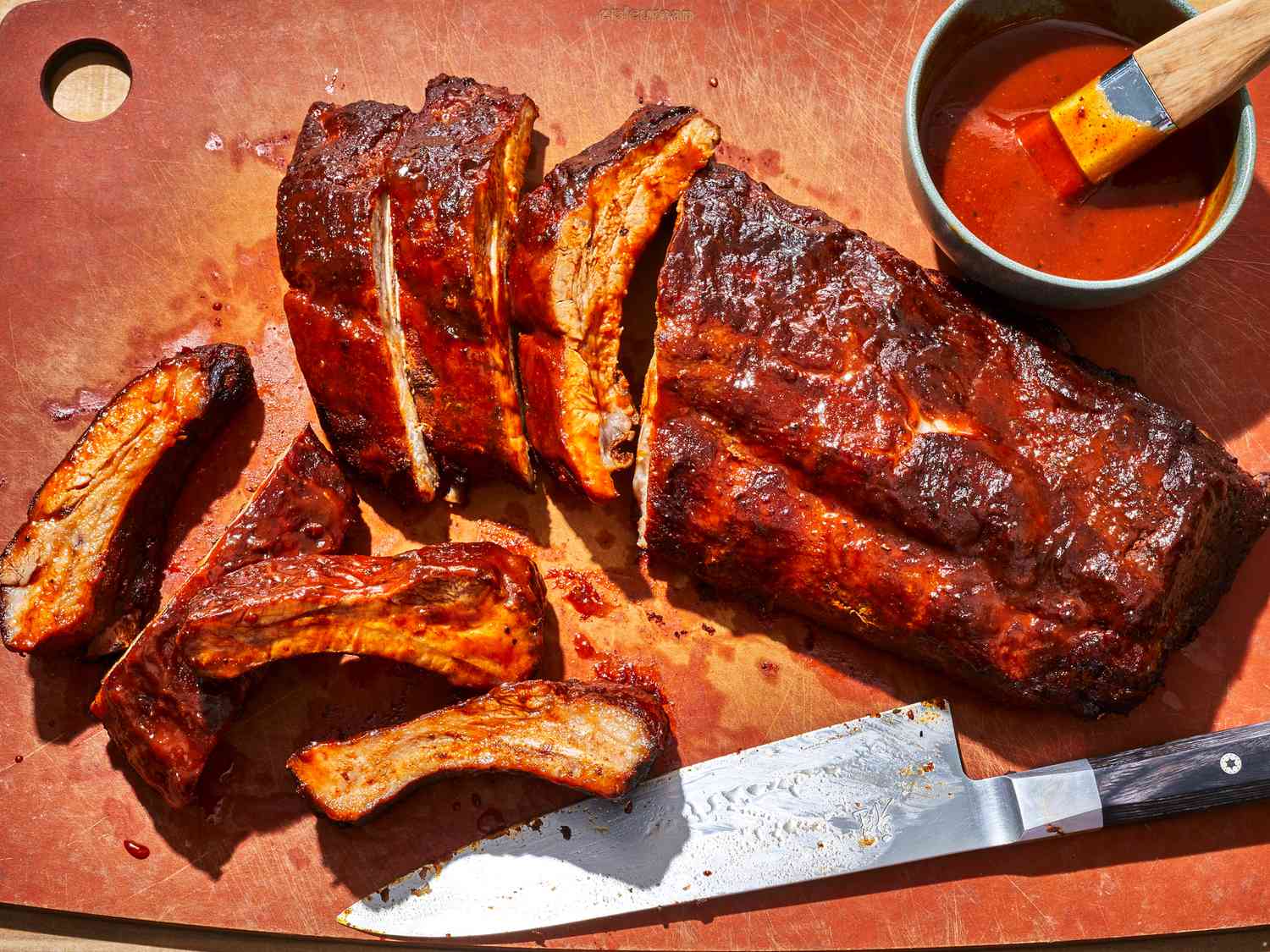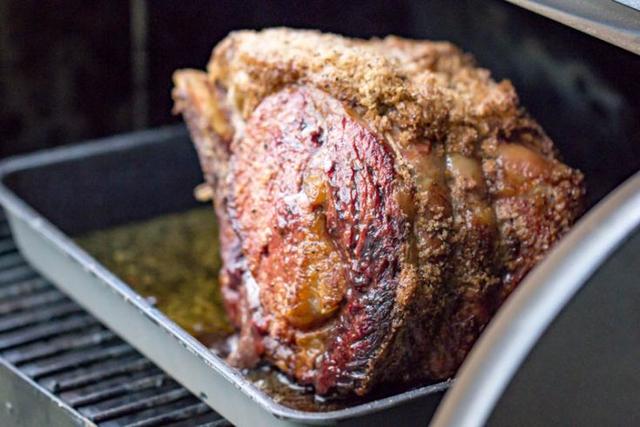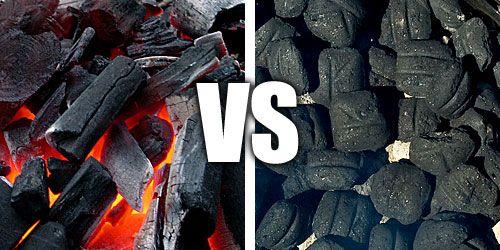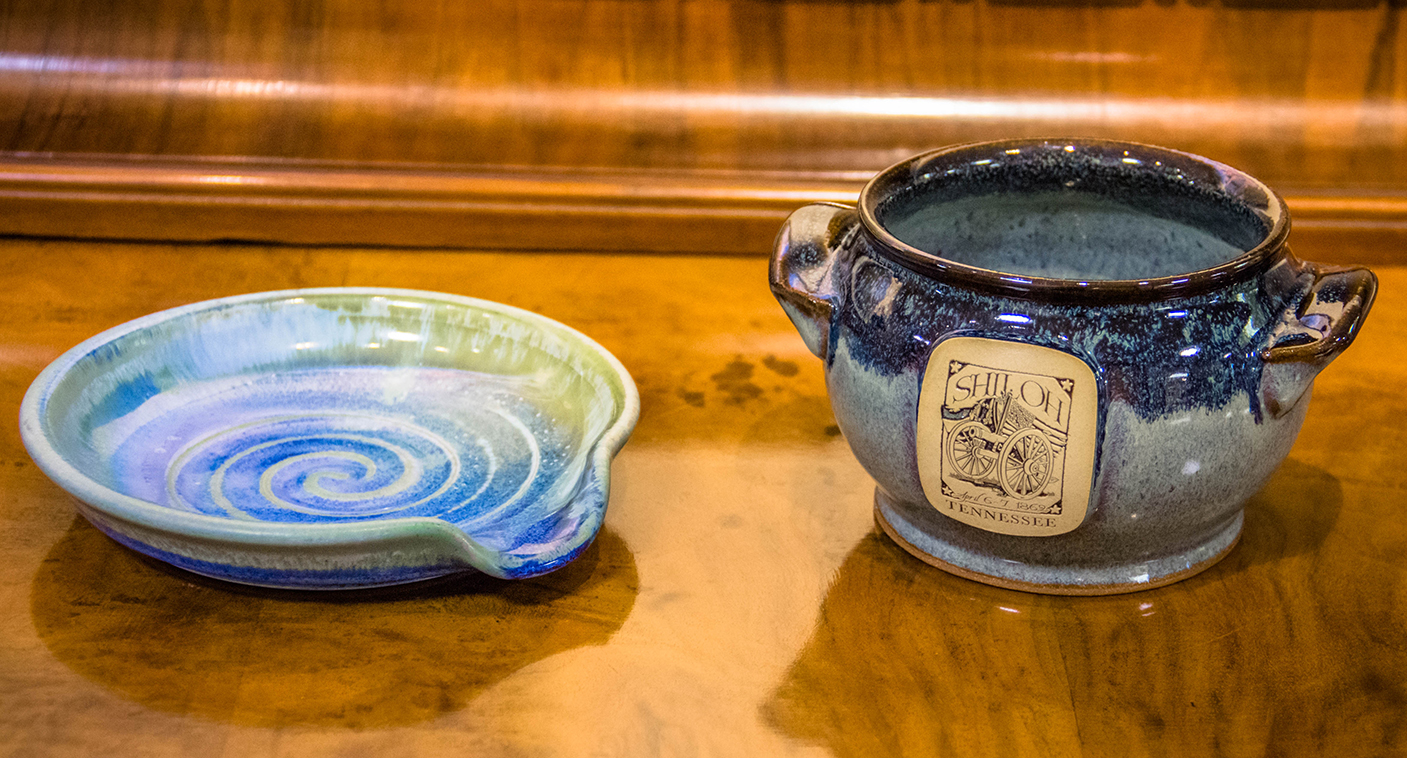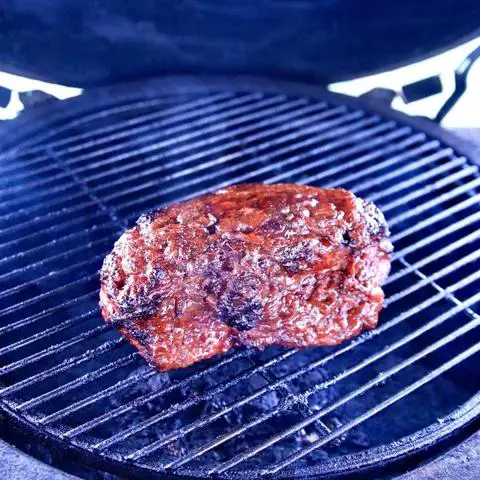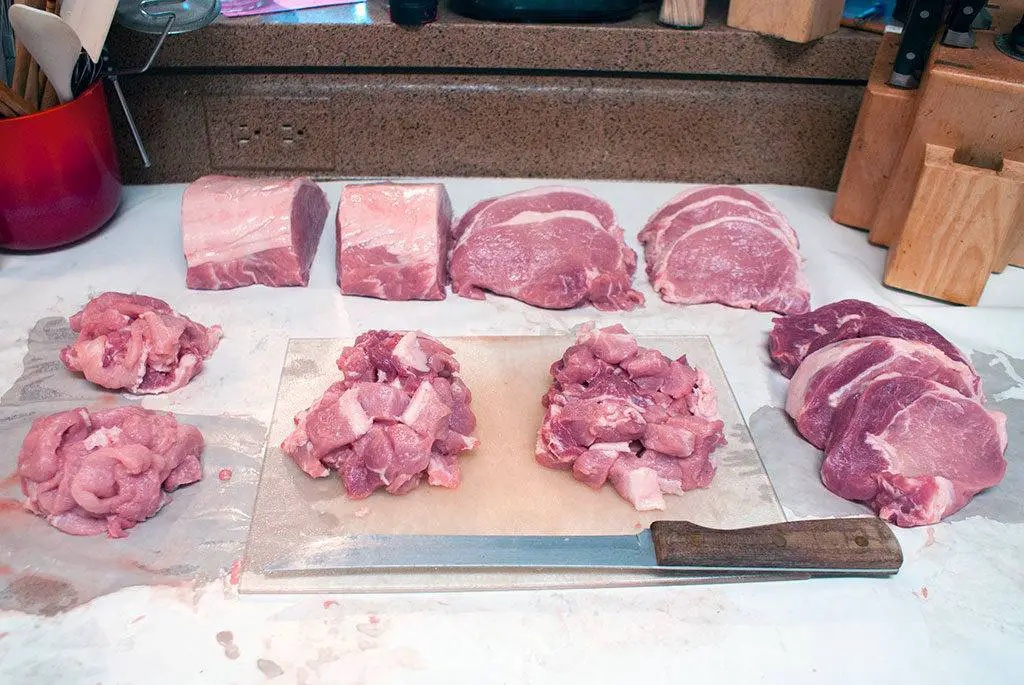
Introducing the Whole Boneless Pork Loin: A Versatile Cut for Culinary Excellence. Discover the succulent and tender meat, devoid of bones, that offers endless possibilities in your kitchen. From juicy roasts to delectable chops, this premium cut promises an unforgettable dining experience every time.
How to Cut a Whole Boneless Pork Loin: Create Several Meals
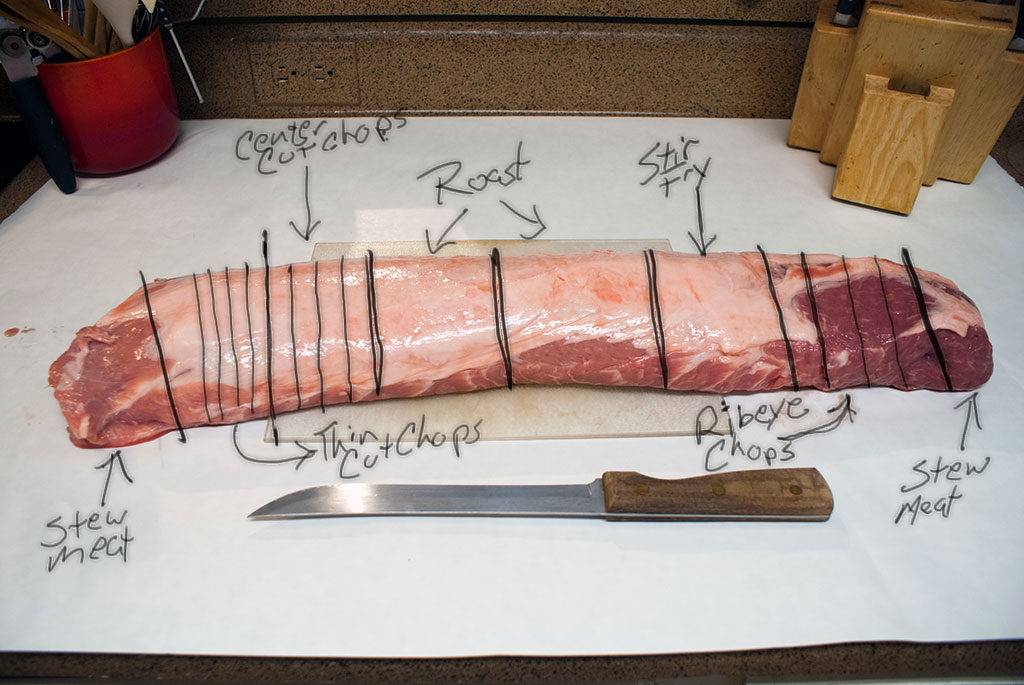
If you’re looking for an economical and versatile cut of meat, the whole boneless pork loin is a great option. By dividing it into various cuts, you can create a variety of meals to feed your family for cheap.
Typically, a whole boneless pork loin is divided into four parts: the blade end, the center loin, the center rib, and the sirloin end. Some people prefer to divide it into three parts, but I find four parts more appropriate for my cooking needs.
The blade end is my favorite part because it has qualities similar to that of a pork butt and can be used for various meals. The center rib can be used as boneless pork chops or left attached to the blade end to form a larger roast. The center loin can be divided into two roasts or used as stir fry or stew meat. The sirloin end is leaner and can be cut into chops or cubed up for stew meat.
To make cutting easier, I suggest using your finger width as a measurement guide and putting the meat in the freezer for 30 minutes to an hour before slicing. To determine which end is which, look at the color and muscle structure of the meat.
There are many ways you can use each section of the pork loin, from making country style ribs and pulled pork to roasts, thick or thin cut chops, stir fry meat, and stew meat. With one whole pork loin, you can create several meals that will feed your family on a budget.
Anatomy of a Whole Pork Loin
Anatomy of a Whole Pork Loin
A whole boneless pork loin is typically divided into four parts: the blade end, the center loin, the center rib, and the sirloin end. The blade end is a favorite among many because it has qualities similar to that of a pork butt and can be used for various meals. The center rib is usually attached to the blade end and can be used for pork ribeye chops. The center loin, which lies between the blade end and the sirloin end, can be divided into two sections – one for a roast and the other for stir fry or stew meat. The sirloin end is leaner and can be cut into thin chops or used for stew meat.
Each section of the pork loin offers different flavors and textures, allowing for a variety of meal options. From country style ribs to pulled pork, thick or thin cut boneless pork chops to roasts, there are numerous ways to prepare and enjoy a whole boneless pork loin. It’s an economical choice that can provide several meals for your family without breaking the bank.
When cutting up a whole pork loin, it’s best to determine what each section will be used for before slicing. Freezing the meat before slicing can make it easier to work with and create cleaner slices. By vacuum sealing each portion individually, you can easily defrost only what you need for a particular meal.
Overall, a whole boneless pork loin offers versatility in creating multiple meals at an affordable price. Whether you’re looking for roasts, chops, stew meat, or other cuts, this economical option has you covered.
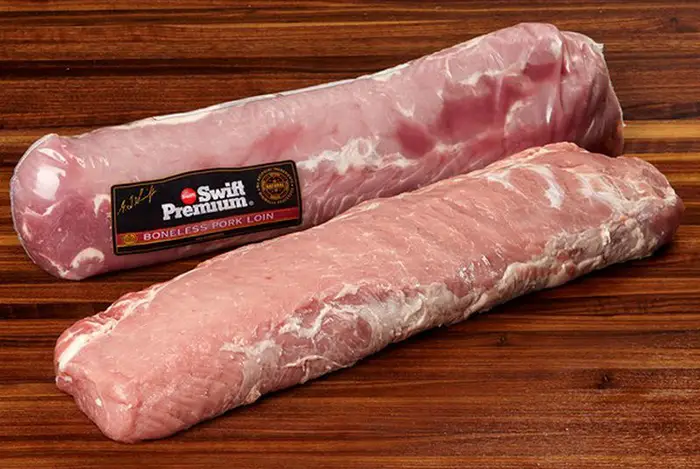
1. Blade End of the Pork Loin
The blade end of the pork loin is a favorite for many due to its proximity to the shoulder and its qualities similar to that of a pork butt. This cut can be used for a variety of meals, making it versatile and delicious. Some popular ways to use this part include:
– Using it for roasts
– Making country-style ribs
– Turning it into pulled pork
The center loin and center rib are often left attached to form one large roast, but they can also be separated into two smaller roasts or boneless pork chops. By cutting them up individually, you have more flexibility in choosing your desired meal options. Some ideas for using these cuts include:
– Slow-cooked pork loin roast
– Boneless pork chops
– Using the rib section for making pulled pork
As you move closer to the sirloin end of the pork loin, the meat becomes more fibrous with connective tissue. This section is leaner and has distinct pieces of connective tissue running through it, making it less ideal for cooking as chops. However, there are still tasty ways to utilize this part such as:
– Cutting it into smaller chops and cubing up those with more connective tissue for stew meat
– Turning it into a small roast for individual servings
Overall, by dividing a whole boneless pork loin into various cuts, you can create several meals that cater to your taste preferences and cooking methods. From roasts to chops to stew meat, there are endless possibilities with this economical cut of meat.
2. Center Rib of the Pork Loin
2. Center Rib of the Pork Loin
The center rib of the pork loin is a versatile cut that can be used in various ways. When the whole pork loin is halved, the center rib section is usually attached to the blade end. This section has qualities similar to a pork butt and can be used for a range of meals.
One option is to leave the center rib attached to the blade end and use it as one large roast. However, I prefer to separate them into two distinct sections. By doing so, you get two roasts that are around 2-3 pounds each, which are more manageable for smaller families or meals.
If you’re in the mood for a slow-cooked pork loin roast, you can use one of these sections. On the other hand, if you want boneless pork chops, you can take one of these sections and slice them accordingly.
The center rib section tends to have better marbling distribution, making it ideal for chops. The meat in this section has better texture and tenderness compared to the sirloin end. So by cutting it into chops, you can enjoy flavorful and juicy pieces of meat.
In summary, the center rib of the pork loin offers options for both roasts and chops. Depending on your preferences and meal plans, you can choose to keep it as one large roast or divide it into individual portions for delicious boneless pork chops.
3. Center Loin
The center loin of a whole boneless pork loin is a versatile cut that can be used for various purposes. Typically, this section is divided into two halves to create both a roast and either stir fry or stew meat.
To use the end closer to the blade as stew meat, simply cube the meat after removing any exterior fat and silver skin. The center rib section is usually attached to the blade end when purchased from a grocery store, making it an excellent choice for stew meat due to its better intramuscular fat content.
The other half of the center loin can be used as a 2-3 pound roast. If desired, you can measure 5-6 inches from the end of the pork loin and slice to create a small blade roast. This section can also be used for country style ribs by measuring 5-6 inches from the end and cutting into strips that are 1.25 – 1.5 inches thick.
By dividing the center loin into these sections, you have the flexibility to choose between a roast or smaller cuts depending on your preferences and cooking needs.

4. Sirloin End
The sirloin end of the pork loin is located towards the back of the pig and has a slightly different texture compared to the other sections. As you move closer to the sirloin end, the meat becomes more fibrous with connective tissue. This makes it less suitable for making traditional pork chops. However, there are still plenty of delicious options for this section.
One way to utilize the sirloin end is by cutting it into smaller chops. These chops may be leaner than other cuts and have distinct pieces of connective tissue running through them. If you’re not a fan of eating these chops on their own, you can cube up the ones with more connective tissue and use them as stew meat.
Alternatively, you can turn the sirloin end into a small roast. By keeping it intact as a roast, you can enjoy slow-cooked pork loin that’s moist and flavorful. This section can also be used for making pulled pork, especially if you include some ribeye chops in the roast for added intramuscular fat.
Overall, the sirloin end offers versatility in terms of cooking options. Whether you prefer smaller chops or a tender roast, this section can provide delicious meals for your family on a budget.
Cutting a Whole Pork Loin
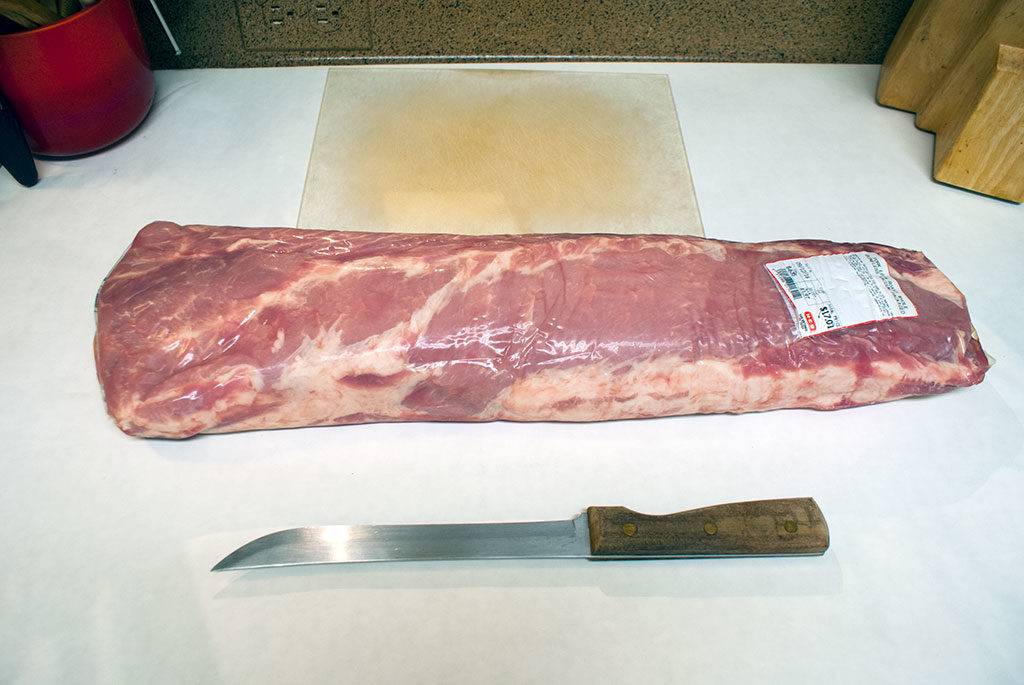
When it comes to cutting a whole boneless pork loin, there are several options for creating different cuts of meat. The pork loin is divided into four parts – the blade end, the center loin, the center rib, and the sirloin end. Some people prefer to divide the pork loin into three parts, combining the center loin and center rib as one large roast. However, dividing it into four parts allows for more versatility in creating various meals.
The blade end of the pork loin is often favored by many due to its qualities similar to that of a pork butt. It can be used for a variety of meals such as roasts, pulled pork, or country style ribs. The center rib section, which is usually attached to the blade end when sold halved in grocery stores, can be utilized for making boneless pork chops or even ribeye chops.
The center loin section can be divided into two distinct sections to create smaller roasts or boneless pork chops. The sirloin end of the pork loin is leaner and contains more connective tissue. It can be cut into chops but may not be as appetizing due to the presence of connective tissue. Alternatively, it can be cubed up into stew meat.
1. Cutting the Blade End
1. Cutting the Blade End: The blade end of the pork loin is a versatile and flavorful cut that resembles a pork butt. It can be used for various meals, such as roasts, pulled pork, or country style ribs. To separate the blade end from the rest of the loin, look for the darker meat color and relaxed muscle structure. Slice along the end where the fat striations stop to create pork ribeye chops.
2. Cutting the Center Loin: The center loin section of the pork loin can be divided into two parts to create smaller roasts or boneless pork chops. By separating these sections, you can have more control over portion sizes and cooking methods. The center loin has better marbling distribution, making it ideal for slow-cooked roasts or boneless pork chops.
3. Cutting the Sirloin End: As you move towards the sirloin end of the pork loin, the meat becomes leaner and more fibrous with connective tissue running through it. This section is best suited for thin-cut chops or stew meat. While leaner, these chops may have less fat content and connective tissue, making them less appetizing when cooked as chops. Consider cubing up these chops with more connective tissue to use them as stew meat.
Overall, cutting a whole boneless pork loin into various cuts allows for a variety of meals and maximizes its economical value. By vacuum sealing each cut individually, you can easily defrost specific portions according to your meal preferences.
2. Cutting the Center Rib and Center Loin
When it comes to the center rib and center loin sections of a whole boneless pork loin, there are a few options for how to cut them. Some people prefer to keep them attached and use them as one large roast, while others like to separate them into two smaller roasts. If you choose to separate them, each roast will be approximately 2-3 pounds in size.
If you’re looking to make boneless pork chops, you can also slice these sections into individual chops. The center rib section is particularly great for making “ribeye” chops, as it has better marbling and resembles beef ribeye steaks.
For those who enjoy slow-cooked meals like pulled pork, using the center loin section with its added intramuscular fat can help keep the roast moist during cooking. Alternatively, you can cube up the meat from this section for use in stir fry or stew recipes.
In summary, the center rib and center loin sections of a whole boneless pork loin offer versatility in creating different cuts for various meals. Whether you prefer roasts, chops, or other dishes like pulled pork or stew, these sections have you covered.
3. Cutting the Sirloin End
3. Cutting the Sirloin End
The sirloin end of the pork loin is leaner and has distinct pieces of connective tissue running through the muscle. While this may make it less appetizing as chops, there are still plenty of ways to utilize this section. One option is to cut it into smaller chops and then check which ones have more connective tissue. These chops can be cubed up into stew meat, perfect for slow-cooked meals in the crockpot. Another option is to turn the sirloin end into a small roast, great for individuals or smaller families. Additionally, you can also make thin cut boneless pork chops from this section if desired.
In conclusion, cutting a whole boneless pork loin into various cuts allows for a variety of meals to be created. From roasts and pork chops to stew meat and stir fry, each section of the pork loin offers its own unique qualities and flavors. By dividing the loin into four parts (or three if preferred), you can customize your cuts to suit your personal preferences and cooking needs. Plus, buying a whole pork loin is an economical choice that provides several meals at an affordable price. So go ahead, get creative with your cuts and enjoy delicious pork dishes at home!
The Result: The Whole Pork Loin Cut Up
The Result: The Whole Pork Loin Cut Up
After following the steps outlined above, you will have successfully cut up a whole boneless pork loin into various cuts for multiple meals. By dividing the pork loin into four parts, you can create a variety of dishes such as roasts, pork chops, stew meat, and more.
The blade end of the pork loin is a favorite for many due to its similarity to a pork butt. It can be used in a wide range of meals. The center rib section, when attached to the blade end, provides an option for those who do not prefer the sirloin half. The fat content in this section makes it ideal for certain dishes.
The center loin and center rib can be left attached to form one large roast or separated into two smaller roasts. This allows for flexibility in meal planning. The sirloin end of the pork loin becomes more fibrous with connective tissue as you get closer to it. While it may not be as appetizing when cooked as chops due to these characteristics, it can be cubed up into stew meat.
By cutting up the whole pork loin into these different sections and vacuum sealing them individually, you can easily defrost and use only what you need for specific meals. This method allows for cost-effective cooking and ensures that no part of the pork loin goes to waste.
In conclusion, by following these steps and understanding how each part of the pork loin can be utilized, you can create several delicious meals from a single purchase. Whether you choose to make roasts, chops, stew meat or other dishes, the versatility of the pork loin makes it an economical and satisfying option for feeding your family on a budget.
In conclusion, whole boneless pork loin is a versatile cut that offers a lean and tender meat option for various culinary preparations. With its versatility and potential for creative cooking methods, it provides a delicious and nutritious choice for individuals seeking a flavorful pork dish. Whether roasted, grilled, or slow-cooked, this cut promises to satisfy the taste buds of pork enthusiasts while offering a high protein content.
Learn More About Grilling
If you want to learn more about grilling, check out these other helpful resources!


